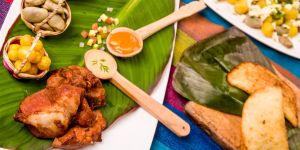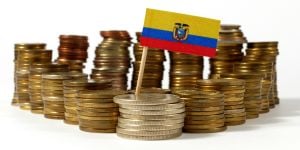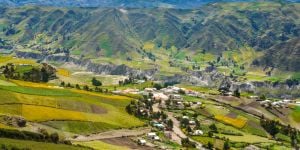Why Are Meats So Costly in Ecuador?
Subscribe to the topic
Post new topic
So, for background: In the USA, before I moved here to Loja, Ecuador, I never paid more than $1/lb for bone-in chicken legs/thighs/wings and never more than $2/lb for stewing/roasting beef. Here, I'm lucky if I can find meats for double that price.
I'm curious, if anyone knows: Why are the prices are so much more here?
I've been thinking about it lately with talk of rising prices in the US. Labor is certainly cheaper here. Land seems a lot more expensive here (though most factory farming doesn't take much land). Not sure on the comparative prices of bulk feed/grains, so that could certainly be a cause. Electricity for refrigeration seems similarly priced. I don't know which regulations, import prohibitions, or tariffs may apply to meat/meat production, so any of those might also be to blame.
Just curious if anyone knows as, to me, the reason for the high prices is not obvious. Or, if meats are cheaper where you are in Ecuador, I'd be interested in hearing about that as well.
According to the laws of supply and demand, a shortage in any product tends to raise the price of the product. Economics 101.
Food shortages around the world result from a complex variety of factors that may include crop failures, overpopulation and poor government policies.
So good luck asking a group of Expats the reasons behind meat pricing in Loja, Ecuador.
In the USA, the New York Times is reporting today (5/5/2020) that covid disruptions and closings* at meatpacking plants have caused meat shortages at grocery chains and burger franchises, including Wendy's ("Where's the Beef?") Online, the article was headlined "A Wendy's With No Burgers As Meat Production is Hit."
Many Wendy's, for instance, have temporarily dropped beef burgers from the menu. Food chain Krogers is limiting the amount of beef and pork that customers may purchase at check-out. Other food chains are doing the same, according to the Times article.
Whether covid will be affecting beef production in Ecuador may be another matter. Since covid is affecting almost every aspect of life worldwide, and not to the consumer's advantage, it's unlikely that knowing why beef prices are what they are in Loja .. will make meat any cheaper there going forward.
To compare meat prices in Loja with those in other cities, visit www.numbeo.com ...
cccmedia
*Though Trump has attempted to keep meatpacking plants open, some closed in recent months as they became identified as major "hot spots" in the pandemic. Eight hundred of the 3,700 workers at the Smithfield meat plant in Sioux Falls, South Dakota, have contracted the novel coronavirus, according to a report today by USA Today (May 5). According to a late report by Associated Press, the Sioux Falls plant is reopening this week without testing employees for the virus.
Actually, his meat price issue was posted just hours ago in May 2020, months after covid was known to affect Ecuador and more than 100 countries.
cccmedia
The OP was interested to know about places in Ecuador where meat costs less than he pays in Loja.
Actually, it appears that beef -- at least some cuts -- is much cheaper in Loja than other cities popular with Expats in Ecuador.
According to the aforementioned numbeo.com, a pound of beef round costing 91 cents at a market in Loja .. is priced at $2.44 in Cuenca .. and $3.25 in Quito.
cccmedia
When you post something is not always when it occurs. I was asking him, he would know the time frame.
Read his OP, this. So, for background: In the USA, before I moved here to Loja, Ecuador, I never paid more than $1/lb for bone-in chicken legs/thighs/wings and never more than $2/lb for stewing/roasting beef. Here, I'm lucky if I can find meats for double that price. US vs Loja prices. Background, meaning not yesterday. See why I asked him to clarify it for you?
The amount of land needed for modern age vs conventional AG is not that different, most of the increase in efficiency has to do with specialization.
The price of meat can vary considerably in Ecuadorian cities depending on whether you buy in a large supermarket with plenty of refrigeration .. or from a vendor at a local Spanish-language market lacking in refrigeration.
When I first moved to Quito in 2013, I used to buy produce and some meats at local markets.
I continued getting produce at the local markets, but stopped buying meat there, largely because I did not like the conditions there -- including lack of refrigeration.
If the OP posts again, I suggest he relate where he has been buying meat .. and whether he has priced meat both at refrigerated meat-sellers and the lower-tech local markets.
cccmedia
Bigbrad2008 wrote:We should let him answer
Sorry I missed all that...
I moved here back in 2017, so I'm not talking about covid-19 (except that it reminded me of the discrepancy in meat prices).
I originally thought that meat prices would be cheaper at the Sunday markets, but after converting the price per pound they charge at the market to $/kilo like they charge at the supermarket, most meat in this area seems to be cheaper at Supermaxi - though, bizarrely, fish and seafood are usually cheaper at the market even though we're in the mountains nowhere near the ocean... The cheapest meat here is ground beef at ~$3.50/kilo (~$1.60/lb... which is actually cheaper than what I paid in the US).
As for price changes, I was at the Supermaxi a couple weeks ago and prices hadn't changed on beef or chicken since the last time I went shopping over 2 months ago.
The reasons I was asking here are twofold: Some expats have looked into investments/doing business in Ecuador and may have already researched this. Secondly, I have no idea if there exists an online forum of large scale meat producers from Ecuador and other countries where the question might more properly be addressed.
I don't know the answers to either question. In regards to less land with confinement raising of livestock, it is not a big change in regards to land needed. Why? Even when animals are in a small space, you use a lot of land to raise the feed they eat. The biggest change is the specialization.
I looked on internet, used ground beef. A detelailed analysis can easily be found for many years in the USA, about 3.50 a pound for most of the last decade. In Ecuador that data was hard to find but I found source that said 7 a kilo. So about the same. Your low price might represent the type of meat not the price for hamburger.
Bigbrad2008 wrote:I don't know the answers to either question. In regards to less land with confinement raising of livestock, it is not a big change in regards to land needed. Why? Even when animals are in a small space, you use a lot of land to raise the feed they eat. The biggest change is the specialization.
True. Was just thinking of the actual "ranch" land. Granted, where I'm located most cattle is "free range" so it's about 1 hectare per animal... Was just meaning that in a factory farm, the land cost, if significant, would go into the feed price as opposed to the actual cost to the factory farmer. And as most feed is produced outside Ecuador... I suspect that the cost has something to do with either regulation (anti-GMO/etc), taxes/fees, or tariffs (on imported meat or feeds). But that's just me as an industry outsider taking guesses.
Actually, I may be completely wrong: As of 2015, the price a producer/rancher got for beef was only $0.70/lb while beef at markets sold for $3.50/lb. So while someone's getting rich off beef production, it certainly isn't the ranchers. I'd assumed that the majority of the price was production.... Didn't imagine the middlemen would be charging five times the price they paid.
https://apps.fas.usda.gov/newgainapi/ap … 1-2015.pdf
The 70 cents a pound is live weight, the cow on the hoof. Lots of bone, guts etc get tossed. But there is a big profit between the farmer and the consumer at times. It is actually simple supply and demand. If the slaughterplants can get more cows than they need they pay little and the rancher hurts. But at times the rancher makes lots of money and the slaughter plant has to pay alot to get those cows. It balances out in the long run. Poultry has become vertically interested meaning that the same guy/company raises the chickens and sells legs to Walmart. So both farmer and slaughter plant are more economically balanced as they share each other's good times and bad times. Commodity are interesting price wise, a small surplus of shortage affects the price tremendously.
Bigbrad2008 wrote:The 70 cents a pound is live weight, the cow on the hoof. Lots of bone, guts etc get tossed. But there is a big profit between the farmer and the consumer at times...
Fair enough and I thought I might be wrong on this, but I looked it up... When I was last in the US, the live cattle price was between $1 and $1.25 and I was still able to buy chuck roast, round, etc., for $2/lb so there is definitely still a huge price discrepancy for which I don't know the reason (unless it is just price gouging by merchants).
If it is, it seems like anyone could open a meat market, charge half what the markets/stores are charging, pay the producers more, and still make a healthy profit... Doesn't seem to make sense unless there is some sort of market failure (monopoly/government or criminal interference).
Edit: Just in case it isn't clear should someone come along later and read our messages, I know that live cattle price per pound doesn't equate to price in meat per pound because while a chuck, round or sirloin roast might cost only $2/lb in certain parts of the US, ribeye, tenderloin and steaks may cost between $6 and $10/lb or more. However, for comparing prices between the two countries (both live and meat), it is useful.
I could be off in this but I think these numbers are correct. About 60 % of live weight becomes a carcass (guts gone, hide gone, head gone etc) and of that carcass, 70 % becomes meat. So that is 42%. So that means 1 dollar for live weight is 2.50 for the meat. But the labor, transport, refrigeration, etc is not cheap. Usually the Packers don't get super rich and neither does the farmer. It is a small profit business. If you want to find a niche market for meat, you have to convince customers that yours is special and they have to pay more for that special meat. Otherwise, small profit is all.
antialiased wrote:So, for background: In the USA, before I moved here to Loja, Ecuador, I never paid more than $1/lb for bone-in chicken legs/thighs/wings and never more than $2/lb for stewing/roasting beef. Here, I'm lucky if I can find meats for double that price.
I'm curious, if anyone knows: Why are the prices are so much more here?
I've been thinking about it lately with talk of rising prices in the US. Labor is certainly cheaper here. Land seems a lot more expensive here (though most factory farming doesn't take much land). Not sure on the comparative prices of bulk feed/grains, so that could certainly be a cause. Electricity for refrigeration seems similarly priced. I don't know which regulations, import prohibitions, or tariffs may apply to meat/meat production, so any of those might also be to blame.
Just curious if anyone knows as, to me, the reason for the high prices is not obvious. Or, if meats are cheaper where you are in Ecuador, I'd be interested in hearing about that as well.
my guess is efficiencies and sophistication in the Supply Chain in North America vs. Ecuador is a primary driver of price differences, rather than overheads like labor and property.
The US has an extremely sophisticated market distribution system infrastructure (road, rail, air). Combine that with innovations in automation, tracking of individual SKUs (including sales velocity). plus now machine learning and AI!
the other part might be how major chains, especially Kroger, engage in loss-leading marketing. So they lose money on turkey in November while making enormous profits on other items likely to be in your cart that week. this kind of gimmicky marketing seems to be totally absent from Ecuador. I'm a bigger fan of the dependably low prices at Costco.
Another price driver is location in US-- but it has little to do with acquisition cost of the property, and more to do with the prices the locals living in that neighborhood are willing to pay. Having just experienced this phenomena during the holidays, Kroger in Cincinnati is quite a bit cheaper overall than Ralph's (owned by Kroger) in Los Angeles for identical items-- but not every item.
In Guayaquil, since the lockdown, I buy most of my meat at La Espanola. In normal life, I buy more often at supermaxi. but like all things, the more one shops around, we notice surprising differences in prices-- I usually get frozen large peeled uncooked shrimp in supermaxi for about $6.50 per pound. But then I started noticing mini-tiendas in my neighborhood selling unbranded frozen shrimp for $3.10 per pound! I tried it and it was just as delicious. The least expensive Ground beef at la espanola is around $1 to $1.50 per pound. Chicken legs also go for $1.20 to $1.50.
What I don't get is the price of pork here! I'm used to paying about $1 to $1.50 a pound for shoulder in the US, and around $2-$3 a pound for ribs. $6 for ribs at La Espanola. Needless to say, I don't buy them. Once the quarantine is over, I'm on a mission to find good pork at a decent price.
When my wife and I spent a week in Ambato, we were thrilled to see that we got about 25% more for our money for fruits and vegetables in Mercado Modelo. I also liked how trout, one of my favorite fishes, was very plentiful in ambato, but extremely hard to find in Guayaquil.
lebowski888 wrote:... Chicken legs also go for $1.20 to $1.50.
What I don't get is the price of pork here! I'm used to paying about $1 to $1.50 a pound for shoulder in the US, and around $2-$3 a pound for ribs. $6 for ribs at La Espanola. Needless to say, I don't buy them...
Nice. Here chicken legs are $2/lb or more. And ditto on pork... Haven't bought any pork since I moved here. Almost forgot it was a meat after 3 years without it.
This is somewhat related to the discussion about food costs and economics, on a more global and macro level, from The Economist:
https://www.economist.com/briefing/2020 … f-covid-19
Economies of scales.
Growth hormone
Appalling intensive factory farming conditions
Ago-business vs small family run farms
Mechanisation vs manual
Lack of subsidies
Non-existent agro lobby
Have you ever worked on those factory farms or know what growth hormones you are talking abiut
I’ve been told by two Ecuadorian dairymen that grain is 4 to 6 times as expensive in South America. Not subsidized. Hay is also crazy expensive. While it may be chewier, all the local beef I’ve seen in Colombia and Ecuador has been grass fed. I think sometimes you might get an old dairy cow, not a grain fed angus. The year round production of equatorial pasture with sufficient water allows a ganadero to raise healthier animals without supplemental feed or putting up hay. I’ve been getting awesome grass fed cow tails for making soup that would cost a ransom in the states. My wife bought 10liters of raw milk yesterday for $3 and made some great cheese. In Colombia.
So I think you see this as a possible new income source. Let's look at beef for an example. The local beef is not what we are used too because of both diet and genetics. I like corn feed marble beef of English type cattle (Angus and hereford). But the new health trend is those genetics raised on pasture. Many of the breeds here are tufer meat. So, possibly one could start a small herd of Angus type beef, they might be here or one could import semen and get 50 genetic change overnight. Then you have a better tasting beef. Maybe raise them on pasture in a region with lush pastures ilive on the coast and the pastures get weedy during dry season. Then you have a premium product that the expats will pay more for and maybe a few locals. Do you slaughter it yourself and sell it no. Those expats want quality and convenience, you want to differentiate yiurself. You could go thru normal distribution channels and maybe it is seen as better in the cooler section of supermaxi but you see it also much more expensive than the adjacent regular beef. Why not do what jumbali juice did. They sold juice at a premium price by having salesman go directly to the store, saying we will supply juice and a small cooler but we decide where it will go and only our product is in there. What benefit to store owner? He gets a higher margin as you control both the cost and sales price. Put the cooler in a special location, make the product special and charge a big premium. You might even to have it frozen and not refrigerated. Frozen beef has a real long shelf life compared to frig. Make the cooler small, make sure it has a glass front door, bright colors and advertising that matches the package of your special beef. Do not fight super maxi, work with them as they sell, you create a premium product and you both make money.
Very strange thread. Either the OP has not bought meat in the US for a long time, or he lived in some area with a super low cost of living. Only one time in the past 2 years did I find chicken leg quarters on sale for less than $1/lb, and I have not seen any beef for under $3/lb for ages. When I last visited Denver, CO the prices were even higher.
susanilla wrote:Very strange thread. Either the OP has not bought meat in the US for a long time, or he lived in some area with a super low cost of living...
Maybe it was the area, but I'm guessing it's just the difference between rural and urban prices. Just checked to make sure... Where I used to live, chicken (whole/quarters) were $0.79/lb a year ago and currently are only up to $0.99/lb during the pandemic.

Edit: Just to clarify, my state had no beef or chicken producers to speak of, so prices couldn't have been influenced by proximity. The industry was mostly just tourism; which made the cost of living significantly higher than other rural areas.
Odd, I live in a town of 20 K, in a rural area also. Maybe it is that we live so far from a bigger city? The next biggest one is almost a three hour drive.
I don't see a date on the ad.
In Bethlehem, PA, we get boneless skinless chicken breasts for $1.89/lb in 5 lb packages. Legs and thighs are less than $1/lb. Cheapest beef and decent hamburger more than $3/lb.
We left Beaufort, SC 6 months ago, in our little town you could come close to the prices from the price chopper flyer above if you shopped around between BiLo, Food Lion and Piggly Wiggly. But if you just did your shopping at Publics, as many retirees do, you would probably pay 2 to 3 times those prices regularly. If we went into the neighboring town to Whole Foods we could expect to pay 2 to 4 times those prices. Since moving here we walk to the fishing village of Santa Rosa, about 1.5 miles from the Malecon in Salinas, and buy 2 whole fish and get them filleted and bring home the frame for soup. Usually pay $1 to 1.75 per pound, needless to say we eat fish about 4 times a week!
Another thought. Maybe the beef in Ecuador is not raised in those enormous feed lots (CAFO) beef? And the chickens are not raised in industrial places that have tens of thousands in buildings? https://www.dailymail.co.uk/news/articl … orine.html
susanilla wrote:Another thought. Maybe the beef in Ecuador is not raised in those enormous feed lots (CAFO) beef? And the chickens are not raised in industrial places that have tens of thousands in buildings? https://www.dailymail.co.uk/news/articl … orine.html
I thought that was possible, but the prices the farmers/ranchers get here for cattle (live beef) is much less per pound than in the US. The extra money appears to go to either the slaughterhouse/meat-packing industry or to the retailers.
Articles to help you in your expat project in Ecuador
 Work in Ecuador
Work in EcuadorEcuador is famous as a retirement haven. But you might not want to wait until retirement age to move there and ...
 Opening a bank account in Ecuador
Opening a bank account in EcuadorA few years back, an expat would just breeze into an Ecuadorian bank, flash their passport and a bank account ...
 Healthcare in Ecuador
Healthcare in EcuadorEcuador, as a fast-developing nation, has laws that are constantly evolving, but one thing is certain: the ongoing ...
 Food in Ecuador
Food in EcuadorWhat kind of food will you find in restaurants, cafes, and private homes in Ecuador? Many restaurants in Ecuador ...
 Leisure activities in Ecuador
Leisure activities in EcuadorYou have made it to Ecuador, now what is there to do in your free time? A lifetime in Ecuador isn't enough time to ...
 The Working Holiday Visa for Ecuador
The Working Holiday Visa for EcuadorEcuador is truly a paradise for adventure and nature lovers, and thanks to the Working Holiday Visa program, they ...
 Taxes in Ecuador
Taxes in EcuadorThe Servicio de Rentas Internas or Internal Revenue Service is the authority in charge of taxes in Ecuador. If you ...
 Family and children in Ecuador
Family and children in EcuadorFamily is everything to an Ecuadorian. The extended family unit is the most important aspect of life in Ecuador, ...
Find more topics on the Ecuador forum



